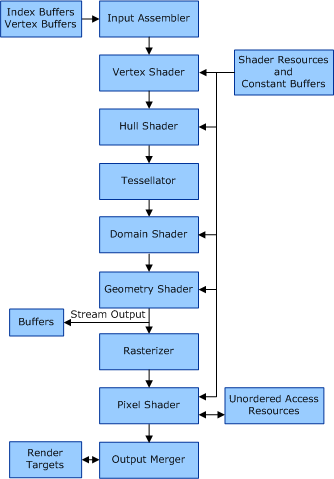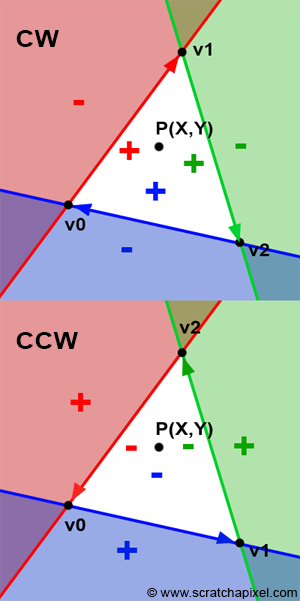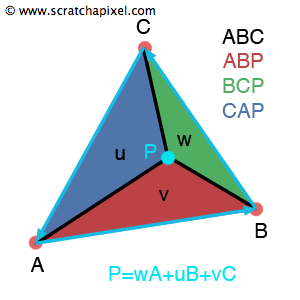Lecture 04: Triangle rasterization
Computer graphics in Game development
Ivan Belyavtsev
23.01.2021
Rendering pipeline

Essential of rendering pipeline
- Input assembler packs vertices to triangles
- Vertex shader performs projections in homogeneous coordinates
- Rasterizer decides which pixel will be covered by the triangle and interpolate attributes
- Pixel shader produces pixel color based on attributes
Edge function
Let’s take two points \((X, Y)\) and \((X+dx, Y=dy)\)
Define an edge function:
\[E(x, y) = (x - X)dy - (y - Y)dx\]
[1]
Edge function values
If \(E(x, y)>0\) then \((x, y)\) on the “right” side
If \(E(x, y)<0\) then \((x, y)\) on the “left” side
If \(E(x, y)=0\) then \((x, y)\) on the edge
[1]
Edge function view
 [1]
[1]
Clockwise vs counter-clockwise
 [2]
[2]
Barycentric coordinates
Let exists \(P=uA+vB+wC\), where \(u+v+w=1\)
 [3]
[3]
2D cross product cheating
\[(u_1, u_2, 0) \times (v_1, v_2, 0) = (0, 0, u_1v_1-u_2v_1)\]
and compare with
\[E(x, y) = (x - X)dy - (y - Y)dx\]
Lab: Rasterization
References
1.
Pineda J. A parallel algorithm for polygon rasterization // Proceedings of the 15th annual conference on computer graphics and interactive techniques. 1988. P. 17–20.
2.
Rasterization: A practical implementation [Electronic resource]. 2015. URL: https://www.scratchapixel.com/lessons/3d-basic-rendering/rasterization-practical-implementation/rasterization-stage.
3.
Ray tracing: Rendering a triangle [Electronic resource]. 2014. URL: https://www.scratchapixel.com/lessons/3d-basic-rendering/ray-tracing-rendering-a-triangle/barycentric-coordinates.